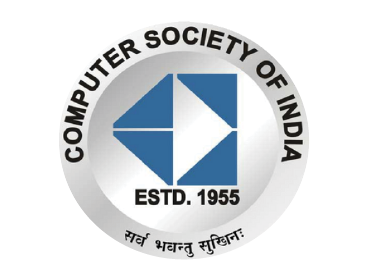



Faculty Mentor:
Dr Praveen Arora
Student Name:
Somnath Chaudhari (MCA)
Shubham Dubey (MCA)
1. INTRODUCTION
Night Vision Technology, is the expertise that makes us capable to see in the night without using any external light source such as a torch or a lamp.
1.1 How does Night Vision Technologies work –
The night vision technology works by gathering the small amount of available light, (starlight, moonlight, or infrared light) through the night vision objective lens. This light then enters a gallium arsenide photocathode tube that takes the light energy called photons and converts it into electrical energy called electrons.

Fig 1: Night Vision
To create the amplification these few electrons pass through a special disk-shaped device about the size of a quarter called a microchannel plate. This microchannel plate has millions of tiny channels inside that, that via an electrical and chemical process cause the few electrons that enter it to strike the walls of the tiny channels and release thousands more electrons. These thousands of new electrons exit the microchannel plate and travel through a phosphor screen which converts the electrons back into photons
which is visible light. This visible light is the product that travels through the eyepiece to your eye and is viewed in a bright greenish hued amplification of the original scene you were viewing.
There are total 5 generations of night vision, starting from 0 to 4 but 3rd Generation is still being used in huge amount because of its stability and less cost where 4th generation night vision is costly and is still in test and trail phase.
United States military describes Generation 4 systems as Generation 3 Auto gated tubes or Generation 3+.
1.2. How far can we see –
There are a lot of variables to this such as how big is the object you’re looking for, is it a person, a house or a mouse.

Fig 2: Observed wildlife using night vision technique
If it is a person you’re looking at, with a good Gen 3 piece of equipment you may be able to "detect" that person 300 yards away, however, you may not be able to "recognize" if it is a man or woman until they are 150 yards away. This is the difference between "detection range" and "recognition range". Another big variable is the amount of light available; is it a cloudy night with no moonlight or is it a bright clear night.
1.3 Night Vision Technology –
Most night vision is still based on Cathode Ray Tube technology even today, but that is changing. Digital technology is overtaking analogue technology in every area similarly in night vision technology.
1.3.1 Thermal
It is analogue in nature and formed through scanning lines and mirror and displays they used vision to create an image.it covers both LWIR and MWIR spectral ranges, and developments such as the TCAD ( Thermal Collimated Aiming Device ) allow for the equivalent of laser aiming while using thermal, specifically against human targets.
1.3.2 Digital
Digital image intensification isn't all that new – but it's been limited in the past by low levels of sensitivity, which makes it difficult to image well under low-light levels, especially those approaching NL6.
1.3.3 Virtual Imaging

Fig 2: Virtual Imaging
Virtual imaging also includes displaying items that simply can't be detected easily, but that are well known, eg, hidden sensors around an objective based on radio detection, well-known patrol routes, vehicles expected to be hidden, personnel areas within a building, walls within a building, etc.
1.3.4 SQUIDs (MRI)
Super-conducting Quantum Interference Devices are the most sensitive magnetic detection systems known to man.
For a long time I wasn't sure that these were actually being used for much outside of industrial and medical application, but when they suddenly appeared as an add-on to ITAR it was clear that they were being used in military development as well.
1.4 Application of Night Vision Technology -
The main purpose for the development of this technology was for the military use, to locate enemies at night.
Not only is it used extensively for military purposes, but also for navigation, surveillance and targeting.
Thermal imaging and Image enhancement technologies are used for surveillance purpose by the police and security
departments. It is also used for the maneuverability of the hunters and nature enthusiasts through the woods at night.
Following are some other applications of the night-vision:
Law-Enforcement
Wildlife Observation
Security
Hidden Object Entertainment
2. Night Vision in India –
The Indian Army has 2nd-gen devices and requires new detection
3rd-gen Thermal Imaging (TI) and night vision devices for soldiers and night sights for rifles. One reason for the long delay has been the failure of defense PSU Bharat Electronics Ltd to absorb the technology with the help of foreign suppliers.
The Indian Army alone has a requirement of over 30,000 third generation NVDs to meet its requirements as per the present war establishment (WE) authorization. There is a need to further enhance these holdings as presently only one device is authorized per section. Currently, only one soldier in a ten-man section is authorized to possess an NVG set.
3. Cost and where to purchase –
Cost of night vision devices depends upon quality of product, and durability.
A mid-rage 3rd Gen. device will cost between 1.5lacs to 4lacs and could be purchase online via eBay or other online shopping site but make sure to buy from authorized seller.
4. Future of night vision –
Future night vision goggles are being designed not just to see at night but also to allow soldiers to share images of what they see with other soldiers who may be miles away.
Scientists are experimenting with panoramic Night Vision Goggles which double the user's field of view to around 95 degrees by using four 16mm image intensifiers tube. And let’s hope that more and more advancement will be made in the field of night vision Technologies.
5. REFERENCES
1. IMRMEDIA.
2. International Journal of Modern Engineering Research.
3. http://www.nightvision4less.com/education-center-night-vision-information-faq.aspx.
4. http://www.nightvision4less.com/education-center-night-vision-technology.aspx.
5. https://www.nightvisionoutfitters.com/pages/faq.
6. https://www.photonics.com/Articles/Image_
Intensification_The_Technology_of_Night/a25144
7. https://www.modarmory.com/night-vision-terminology/generations/